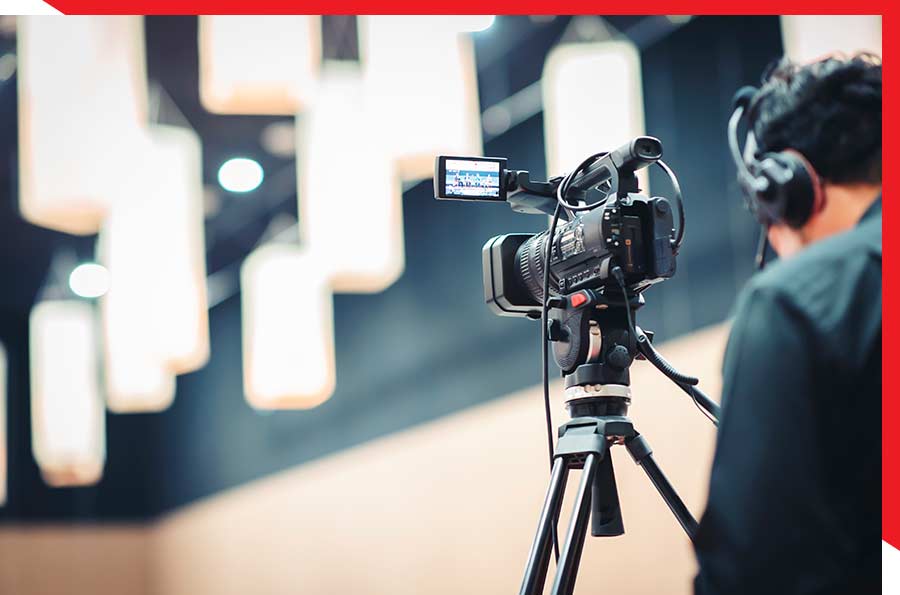Exploring the Devices of Legal Videography: Unveiling Its Procedure in Safeguarding Authentic Visual Statement for Judicial Procedures
In the realm of judicial procedures, the role of legal videography stands as a keystone in maintaining and providing aesthetic evidence. As innovation remains to development, the systems behind legal videography have actually come to be increasingly intricate, providing a vital layer of credibility to testimonies caught on video clip. By diving right into the functional details of legal videography, one can discover the meticulous procedures that protect the stability of visual evidence provided in courtrooms - Legal Videography. This expedition not just drops light on the historic development of lawful videography however additionally means the future patterns that might further reinvent how visual statements are supported in the world of justice.
Historic Evolution of Legal Videography
Checking out the historical development of lawful videography exposes a substantial makeover in the capturing and discussion of visual proof within the lawful landscape. In the past, legal procedures heavily depended on written pictures and records to document occasions and offer proof. With the advent of video innovation, the legal market witnessed a standard change in how visual statement was recorded and offered.
The development of lawful videography can be traced back to the late 20th century when improvements in video recording devices made it extra obtainable for use in court rooms. This technological improvement not just enhanced the accuracy and integrity of aesthetic evidence yet also changed the method instances existed to discretionary (Legal Videography). Lawyers began to recognize the convincing power of video recordings in communicating emotions, nuances, and non-verbal hints that written pictures or transcripts alone can not record properly

Modern Technology Advancements in Video Documentation
What vital technical improvements have transformed video clip documentation in the legal field? The legal area has seen substantial developments in video documentation innovation that have boosted the authenticity and dependability of visual evidence in judicial procedures. Among the vital improvements is high-definition (HD) video clip recording capabilities, which provide crystal-clear pictures and sharp information that are essential for accurately catching testimonies, faces, and other aesthetic hints. In addition, the assimilation of timestamping and metadata attributes in video clip documentation tools has actually allowed exact documents of when and where the video clip was recorded, ensuring the stability of the proof presented in court.
Additionally, advancements in video file encryption and watermarking innovations have actually bolstered the safety and tamper-proof nature of video evidence, safeguarding it versus unapproved alterations or meddling. The development of cloud storage space solutions and remote access abilities has structured the storage space, access, and sharing of video evidence, assisting in seamless partnership among legal professionals and guaranteeing effective access to vital aesthetic testimonies when required. These technical improvements in video clip paperwork have most certainly changed the lawful field, enhancing the precision, credibility, and admissibility of aesthetic evidence in judicial procedures.
Function of Lawful Videographers in Court Room Setups
The evolution of video documentation technology in the legal area has actually necessitated an essential function for legal videographers in courtroom setups, ensuring the integrity and dependability of visual testaments offered throughout judicial proceedings. Legal videographers play a fundamental role in recording and preserving exact aesthetic evidence that can be critical in lawsuit. Their obligation reaches setting up tools, tape-recording procedures, and creating high-grade video clips that accurately reflect the events in the court room.
In court setups, lawful videographers need to comply with rigorous guidelines and requirements to keep the authenticity of the visual document. They should have an eager eye for information and a comprehensive understanding of legal treatments to guarantee that the video footage they capture is a real additional resources depiction of the occasions that transpired. Furthermore, lawful videographers frequently function very closely with legal teams to ensure that the video clip proof aligns with the situation's demands and can be properly offered in court to support the legal debates being made. On the whole, the role of legal videographers in courtroom settings is essential in upholding the principles of justice and ensuring the openness of lawful proceedings.

Ensuring Admissibility and Stability of Video Clip Evidence
To keep the integrity of visual evidence presented in legal proceedings, ensuring the admissibility and stability of video clip proof is an important obligation for legal videographers. Admissibility refers to the acceptance of evidence by the court, and for video clip proof to be admissible, it must satisfy specific standards. Lawful videographers play a vital function in making sure that the videos they record abide with the policies of proof, such as dependability, authenticity, and significance.
Integrity of video evidence involves keeping the originality and accuracy of the video footage from the time it is videotaped till it is presented in court. This consists of securely storing the video clip data, recording the chain of custody, and stopping any type of tampering or alterations. Legal videographers have to stick to stringent procedures to guarantee the integrity of the video clip evidence and avoid any kind of difficulties to its authenticity.
Future Trends in Legal Videography
Offered the increasing dependence on innovation in legal procedures, legal videographers are poised to welcome cutting-edge advancements shaping the future of visual testimony capture and presentation. Among the noticeable trends coming up is the combination of virtual fact (VR) and increased reality (AR) innovations into legal videography. These technologies have the possible to change just how visual evidence is presented in courts, allowing judges and courts to immerse themselves in the scene of the crime or event.
In addition, using expert system (AI) algorithms for video analysis is anticipated to enhance the process of reviewing and examining big quantities of video footage. AI can assist in determining key moments, abnormalities, and patterns within video clips, enhancing the performance of legal examinations.

Verdict
To conclude, lawful videography has played a vital duty in giving genuine aesthetic evidence for judicial proceedings. Through technological innovations and the expertise of lawful videographers, the integrity and admissibility click here to find out more of video clip proof are ensured in court room setups. As lawful videography continues to evolve, it will be crucial to maintain standards that maintain the precision and dependability of visual testimony for the future of legal process.
Taking a look at the historic progression of lawful videography exposes a substantial change in the catching and discussion of visual proof within the legal landscape.The evolution of video clip paperwork innovation in the lawful area has actually demanded a crucial role for lawful videographers in court settings, making sure the integrity and dependability of visual statements provided during judicial proceedings. In addition, lawful videographers frequently work very closely with lawful teams to ensure that the video clip proof lines up with the case's demands and can be effectively presented in court to sustain the legal disagreements being made.To keep the integrity of view it aesthetic proof presented in lawful procedures, ensuring the admissibility and integrity of video proof is a critical responsibility for lawful videographers. As lawful videography continues to develop, it will certainly be necessary to maintain standards that maintain the accuracy and dependability of visual statement for the future of lawful process.